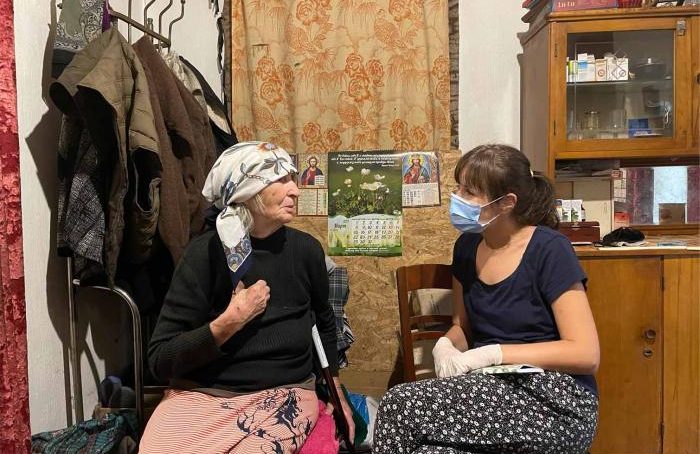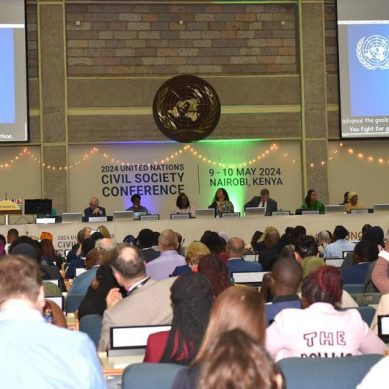
I’ve been covering conflict in Ukraine for more than eight years. I was in the country when Russia launched its full-scale invasion on February 24 last year and have visited several times since. Still, I was shocked by what I saw during my latest reporting trip in January.
Before the war, Ukraine was a developed country with beautiful, historic cities and good infrastructure. One year of fighting and bombardment has set it back decades.
Over recent trips, I have become used to sleeping in bomb shelters and hearing explosions. But I wasn’t prepared for the constant cold and the lack of electricity, lighting and mobile phone connection I encountered in late January – even in the west of the country, which hasn’t seen on-the-ground combat.
All the civilians I interviewed were saying how afraid they were of an imminent Russian offensive. A volunteer in a centre housing displaced people near the Polish border told me that many of those staying there were bracing for a nuclear attack.
After all the horrible things they had experienced, they were anticipating yet worse to come. The desperation I saw was hard to process.
I began reporting on Ukraine in 2014, when Russian-backed separatists launched an insurrection in the eastern Donbas region. People displaced by the fighting sought refuge in cities across the country, including Uzhhorod in the far west bordering Slovakia, where I am from.
When I heard that hundreds of war refugees were living less than two hours away from my hometown of Kosice, I decided to travel to Uzhhorod to document their stories. At the time, I could not have imagined that I would spend the following eight years writing about people whose lives continue to be turned upside down by a Russian war in Ukraine.
When I arrived in Uzhhorod, it was a few months after the fighting in Donbas started. I interviewed dozens of families who had nowhere to live. They were staying in a cheap, Soviet-era hotel that had been forced to accommodate them by local authorities. It was the only thing saving them from homelessness.
Whole families were sharing single hotel rooms with no access to kitchens or washing machines. Artur, a displaced person I met then – and who I’m still in contact with today – told me the only assistance they received was the equivalent of around five euros per year from the city council.
In 2014 and 2015, the fighting in eastern Ukraine seemed far away from the rest of Europe. There wasn’t the same outpouring of support or push to provide aid to victims of the conflict that we’ve seen in the past year.
When I interviewed Artur again last month, he said the memory of how limited the humanitarian response had been back then made him feel awful, but he was glad to see that today’s displaced receive better support than he did.
In the years that followed, the war in the Donbas continued at a low simmer, becoming a so-called ‘frozen conflict’ – one that was all but forgotten by international media. I still returned to Ukraine almost every year. As a freelance reporter, few media outlets were interested in publishing my stories when the frontlines were calm, even though sporadic fighting took place for years and people were still losing their lives.
Thousands of people in need lived on both sides of the ‘line of contact’ that divided areas of the Donbas controlled by the Ukrainian government and the Russian-backed separatists, suffering a silent crisis. Many were elderly people who had been unable to flee or who didn’t want to leave the only homes they had ever known.
After Russia invaded last year, when I tried to reach out to people I’d been in touch with over the years, I was told that entire villages have been destroyed and no one on the frontline could have survived unless they were evacuated.
A local humanitarian worker I interviewed a couple of months after last year’s invasion told me that even if – by some miracle – a few survivors remained in frontline villages in the Donbas like Opytne, Pisky or Vodiane, they would likely have died of thirst and hunger. These villages were hard to reach before the full-scale invasion and now infrastructure in the towns has been destroyed and the area is almost entirely inaccessible to aid groups.
I keep on thinking about babushka (grandmother) Lidiia, an 85-year-old woman who lived alone in Mariinka, a town along the ‘line of contact’ that has been largely reduced to rubble and is still an epicentre of fighting.
Lidiia lived with her cat Matilda and loved talking about kittens and making jokes. Other people in the town called her “the cheerful Lidiia”. I always enjoyed interviewing her. She never lost her sense of humour and resilience. She admitted that she felt lonely in the warzone and would squeeze her cats when the shelling was too loud. When I visited, she would call me “my little doll” and give me a hug.
- The New Humanitarian report / By Sara Cincurova / Freelance journalist who covers human rights











